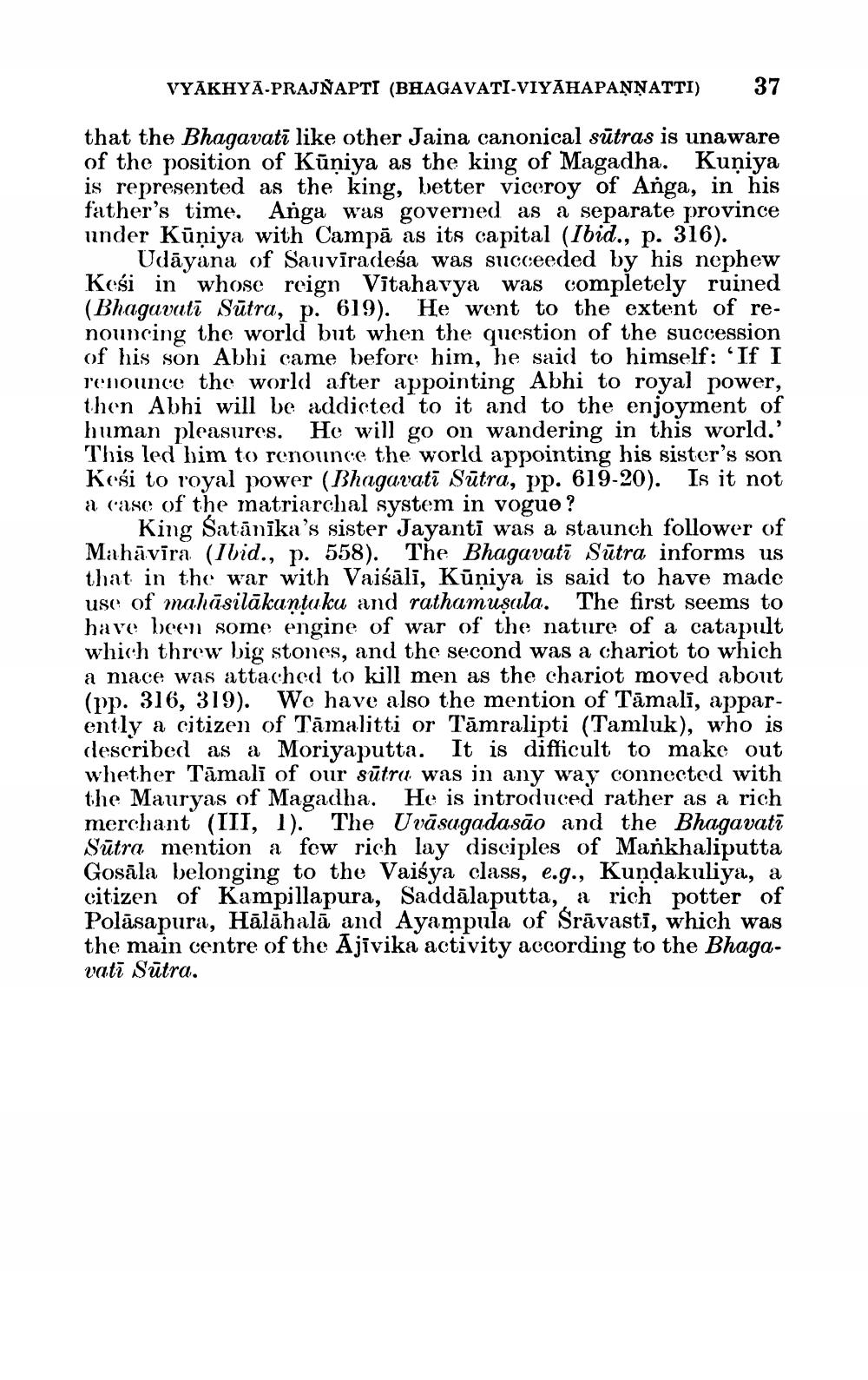________________
VYAKHYA-PRAJÑAPTI (BHAGAVATI-VIYAHAPAŅŅATTI)
37
that the Bhagavatī like other Jaina canonical sūtras is unaware of the position of Kūņiya as the king of Magadha. Kuņiya is represented as the king, better viceroy of Anga, in his father's time. Anga was governed as a separate province under Kūņiya with Campā as its capital (Ibid., p. 316).
Udāyana of Sauvīradeśa was succeeded by his nephew Kesi in whose reign Vitahavya was completely ruined (Bhagavatī Sūtra, p. 619). He went to the extent of renouncing the world but when the question of the succession of his son Abhi came before him, he said to himself: 'If I renounce the world after appointing Abhi to royal power, then Abhi will be addicted to it and to the enjoyment of human pleasures. He will go on wandering in this world.' This led him to renounce the world appointing his sister's son Kesi to royal power (Bhagavati Sūtra, pp. 619-20). Is it not a case of the matriarchal system in vogue ?
King Satānika's sister Jayanti was a staunch follower of Mahāvīra (Ibid., p. 558). The Bhagavati Sūtra informs us that in the war with Vaiśālī, Kūniya is said to have made use of mahāsilākantuku and rathamuşala. The first seems to have been some engine of war of the nature of a catapult which threw big stones, and the second was a chariot to which a mace was attached to kill men as the chariot moved about (pp. 316, 319). We have also the mention of Tāmali, apparently a citizen of Tāmalitti or Tāmralipti (Tamluk), who is described as a Moriyaputta. It is difficult to make out whether Tāmali of our sūtra was in any way connected with the Mauryas of Magadha. He is introduced rather as a rich merchant (III, 1). The Uvāsugadasāo and the Bhagavati Sūtra mention a few rich lay disciples of Mankhaliputta Gosāla belonging to the Vaiấya class, e.g., Kundakuliya, a citizen of Kampillapura, Saddālaputta, a rich potter of Polāsapura, Hālāhalā and Ayampula of Srāvasti, which was the main centre of the Ajīvika activity according to the Bhagavatī Sūtra.




